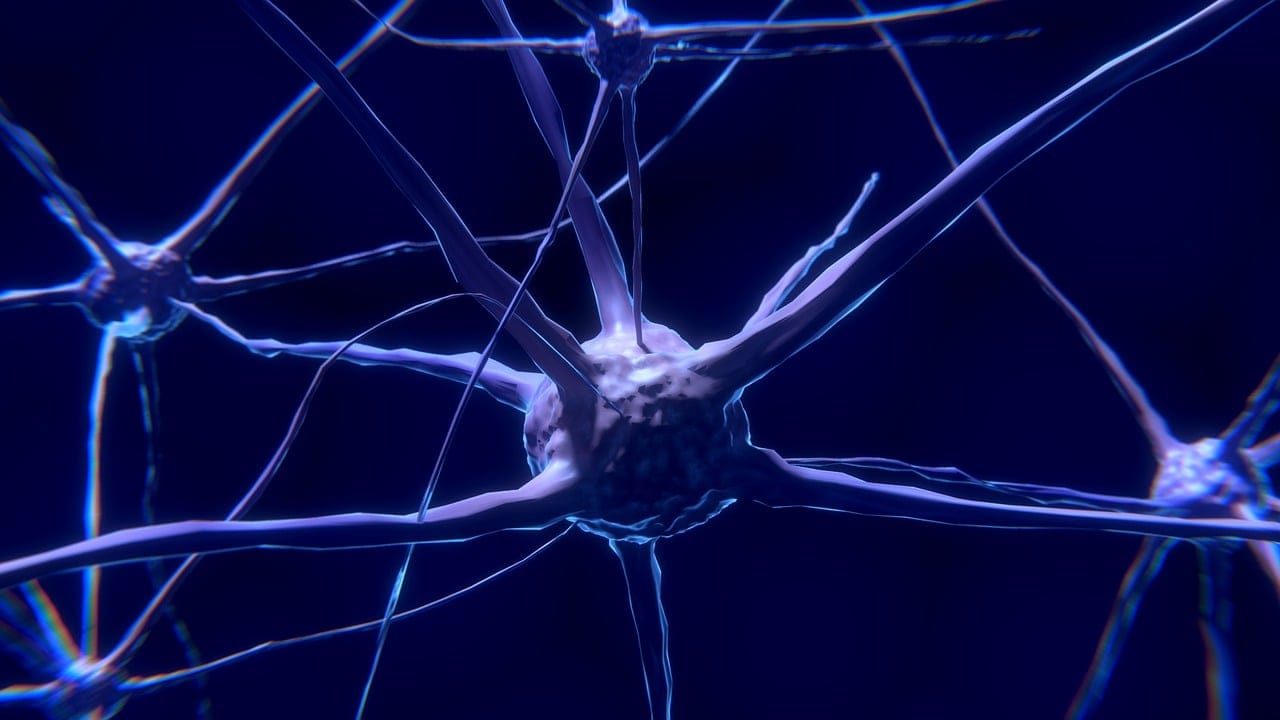So today I'll talk about red light therapy for neuropathy. The word neuropathy can be broken down in two parts, "neuro", meaning nerve. And "pathy", hinting at "pathology" - or affected by disease. So "neuropathy" means that the nerve is somehow affected. Neuropathy is almost always paired with pain.
In my blog, I'll consider questions such as:
- "Does red light therapy work for neuropathy?"
- "How to use red light therapy for neuropathy?"
- "What's the science on red light therapy for diabetic neuropathy?"
- "Does red light therapy for nerve regeneration work?"
And so forth! For my methodology, I've included all published studies that are currently available on this topic from Vladimir Heiskanen's excellent datasheet. But, let's start with the basics and first understand neuropathy in the next section. If you don't have much time, read the summary below though:
Neuropathy is often paired with pain and differences in sensation. Lifestyle and nutrition have an effect on the development of neuropathy, and its intensity as a disease. Yes, some neuropathies are caused by trauma, but many are also caused by autoimmune conditions, nutritional deficiencies, drug abuse, infections, cancer, and diabetes.
In terms of red light therapy for neuropathy, there's loads of very positive animal study evidence. Human research is sparse, for now, but promising. It's very hard to translate that sparse research into clear human recommendations. For the best results, you'll want a clear diagnosis of the exact area that's affected by neuropathy, by a medical professional. A diagnosis with the affected area makes targeted treatment possible.
For diabetic neuropathy, tons of different human studies exist, and most of them (80%+) have positive outcomes. What seems to work best according to the science, is a lower power output, treatment directly on the front and the bottom of the feet with contact of the device, and a combination of red and near-infrared wavelengths. Sensation, pain, balance, and function will improve with these, with an average of 3 treatments per week for at least 1 month.
A tabletop device where the power output can be adjusted likely works best, as you only need 3-5 J/cm2 per location. If you don't understand dosing, read my red light therapy dosing blog. Over time, you can increase the dose to 30-40 J/cm2 max, which is used in some of the studies.
Unfortunately, there aren't too many humans studies on red light therapy for neuropathy in general. The only exception here is diabetic neuropathy.
The Root Cause Of Neuropathy And Pathology Basics
So thet topic of neuropathy is extremely complex. There's no one such thing as a "neuropathy" - just like there's not one such thing such as "pain". Different types of neuropathies exist. So let's explore the scientific developments on this topic from the last few years (1; 2; 3; 4; 5; 6; 7; 8; 9).
What's unique about neuropathy is that often, there's both sensory loss in an area of the body, but also pain (1). Neuropathy can exist outside the central nervous system, which consist of the brain and spinal cord, and is then called "central neuropathy". When the neuropathy's originates outside the central nervous system, it's called a "peripheral neuropathy". Both types have more specific forms as well. For instance, even gluten sensitivity or allergy has given rise to "gluten neuropathy" (1).
The following quote shows you how complicated the topic really is, when you want to talk about specific types of neuropathy:
"Peripheral neuropathies encompass disorders of peripheral nerve cells and fibers, manifesting secondary to a wide range of pathologies. These include cranial nerves, spinal nerve roots and ganglia, nerve trunks and division, and autonomic nervous system nerves. Several methods classify peripheral neuropathies, including mononeuropathies, multifocal neuropathies, and polyneuropathies. Further subclassifications can be made by separating peripheral neuropathies as axonal, demyelinating, or mixed, essential for treatment and management. The most frequently encountered symptoms of peripheral neuropathy include numbness and paresthesias; pain, weakness, and loss of deep tendon reflexes may accompany these symptoms." (2)
So, just like there's no one type of autoimmune disease or cancer, there's also no one type of neuropathy.
Usually, neuropathies develop over the course of months and years although because of rapid injury, that process can be much quicker (2). Different nerves can be affected, such as the motor nerves (involved in movement, among others), sensory nerves (sensation, such as touch or heat), and autonomic nerve fibers (unconscious processes, such as blood pressure and digestion). All these processes can be affected by a neuropathy.
Diseases can also cause a neuropathy (3). Examples here are autoimmune diseases, diseases caused by infections, and genetic conditions. However, diabetic neuropathy is arguably the best-known type (4). Diabetic neuropathy mainly affects the extremities, the hands and feet.
Ideally, you'll get help from medical professionals in identifying which exact neuropathy affects you (5). Medical professionals can do so, based on your family and work history, your symptoms, and physical examination. For instance, whether a neuropathy is acute or chronic, or the nature of the symptoms, whether the face is affected or not, whether sensation is mostly affected or whether it's motor predominant, is all important information for medical professionals. Nerve conduction tests can further differentiate between different neuropathies.
I emphasize that point because if you know which neuropathy affects you, your chances of treating it with red light therapy shoot up. A very simple example to demonstrate that fact is that if you've got a problem originating in your spine that gives symptoms in the periphery, such as your leg, then treating the leg won't fix the problem because you're not dealing with the source of the issue.
Sometimes, the problem can even originate in the brain. In that case, treating the extremities won't help. So with a proper diagnosis, treatment becomes infinitely easier!
And you'll want a proper diagnosis because neuropathy can have a considerable influence on your quality of life. A recent review - which summarizes and integrates previous research - writes that:
"Neuropathic pain caused by a lesion or disease of the somatosensory nervous system is a common chronic pain condition with major impact on quality of life. Examples include trigeminal neuralgia, painful polyneuropathy, postherpetic neuralgia, and central poststroke pain. Most patients complain of an ongoing or intermittent spontaneous pain of, for example, burning, pricking, squeezing quality, which may be accompanied by evoked pain, particular to light touch and cold." (6)
Hence, people with neuropathy want help! And, 1-7% of the human population currently deals with neuropathy (7). That number grows bigger once you're older, and is lower for young people. Sometimes, neuropathy is easy to fix, such as nutritional deficiencies and toxin exposure. At other times, up to roughly 25-50% of the cases, however, there's no clearly identifiable cause. Additionally, disease that are mostly preventable through lifestyle and nutrition, such as Parkinson's Disease and Alzheimer's, are also intertwined with developing neuropathies (8; 9).
Nevertheless, I do want to emphasize the importance of lifestyle and nutrition for most neuropathies, as I always do:
- Sleep quality is strongly linked to the course of neuropathy (10; 11; 12). It's not easy to posit a causal link here, simply because neuropathy also decreases sleep quality, through pain mostly, that often becomes worse at night. Check my blog on red light therapy for sleep quality if you want to know more!
- Nutritional deficiencies can directly cause neuropathy (13; 14; 15; 16). B-vitamins are most often the culprit but will affect people in the developing world the most. But, in some cases, alcoholism, for instance, or drug abuse where a person doesn't eat can spiral your B-vitamin status out of control quickly, leading to neuropathies.
- Being overweight or obese and having metabolic syndrome very likely increases neuropathy risk (17; 18; 19; 20; 21). For optimal health, you'll have to maintain a normal, lean body fat percentage. That's easier said than done, of course, for many but I do want to inform you about the risk. I've had a belly too in the past after a gluttonous period so I know the drill! Obesity alone may be sufficient to induce neuropathy in some cases (20). And a raised body mass index increases your odds of diabetic neuropathy by 2.45X (21)!
- Toxin exposure can directly cause neuropathy (22; 23; 24; 25; 26). This is a very complex topic, but generally, the rule here is that if you wouldn't eat something, then don't breathe it in nor put it on your skin! Your skin and lungs will absorb what you expose them to!
- High blood sugar levels and diabetes cause neuropathies, and diabetic neuropathy in particular (27; 28; 29; 30; 31). Make sure you move enough throughout the day, exercise, eat a healthy diet (someting you can stick to, with natural foods only), cut out soda, etc.
- You get the drill. I could have included more lifestyle strategies here, such as air pollution, or your circadian rhythm. But the message is clear I hope!
Next up, let's explore another tool in the toolbox:
Red Light Therapy Benefits For Neuropathy
Now I'll explore the red light therapy benefits for neuropathy. There are 19 studies on red light therapy for neuropathy currently. Most of these studies are animal studies, and there's one review. I'll explore all of these with you.
Human Studies
- A human study uses 600 - 1,600 nm of light ("polychromatic light") (36). I don't have access to the full text, but what I can see from Heiskanen's notes is that study participants had their pain levels reduced from a 10/10 to a 6.5/10, which is huge.
- Then there's a case study with amputation-related stump pain (49). Three participants were included in the study but it wasn't randomized. 830 nm was applied for a total dose of 8-15 J/cm2. Pain decreased and the ability to perform daily activities improved. The light was applied to the stump scar of the amputated leg.
Animal Studies
Here are all animal studies on neuropathy broken down:
- 32 rats received 660 nm red light daily, for either two or four weeks, with treatment starting 30 minutes after a spinal cord injury (32). Scientists measured Gad65 (involved in autoimmunity), interleukin 1-alpha (IL1α), interleukin 10 and Interleukin 4 (messaging compounds for inflammation), and purinergic receptor (P2xR and P2yR) expressions (involved in pain and the immune response). For pain, two and four week treatment worked equally well. For sensation and the functional recovery (so the ability to move), the four-week treatment worked better.
- Another study showed reduced changes in pain (allodynia, when you shouldn't feel pain for instance) and excess pain (stimuli that shouldn't be hurtful) (33). But the study doesn't describe the treatment protocol well.
- A study using 810 nm shows reductions in neuropathic pain behavior (34). This was after a spinal cord injury was caused. Treatment occured daily for 14 days. In the end, NF-κB signaling was affected, which resulted in less pain behavior.
- One more study used 50 J/cm2 as a dose, at 808 nm in mice (35). A nerve in the lower back of the mice was intentionally chronically constricted, giving rise to neuropathic pain. The mice were then placed on a hot plate. Exposure to the light therapy increased pain tolerance. And because some mice were injected by a substance affecting the serotonin system, serotonin likely plays a role in pain perception here!
- Next up, a study using 904 nm in rats (36). Some rats were exposed to a chronic constriction injury of a nerve again. These rats increased their "substance P" and "transient receptor potential receptor V1" levels after the injury, which are involved in chronic pain. When the rats were then exposed to light therapy, the levels of substance P and transient receptor potential receptor V1 went down again. Increases of leg temperature because of the injury were also reversed.
- Rats with a spinal cord injury were exposed to 660 nm for 2 weeks (37). The laser was applied 30 minutes per day. Changes in pain sensation and excess pain when the rats shouldn't feel any improved, but mechanical pain sensations didn't. Overall, this is an improvement though!
- In one more study, poor rats were exposed other methods of pain in the teeth in the facial nerves. 810 nm light was applied for 500 seconds (38). A combination of oxycotin and light therapy worked best here.
- Then, mice were exposed to 20 J/cm2, at 890 nm over 20 minutes treatment time (39). The rats either received a paw or a nerve injury. The exposure to hotness and cold were both normalized with the light therapy groups. Also, the results were lost when the light therapy was no longer applied!
- Next up, rats were treated with 808 and 905 nm (40). Treatment frequency was ten times over three weeks. The rats received a chronic constriction of their back nerve again, that runs to the lower body (sciatic nerve). Mechanical hypersensitivity (from pressure) and spontaneous pain (that is random and shouldn't be there) were both reduced from the first treatment. There were also signs of healing the spinal cord, such as the conductive myelin sheath.
- Furthermore, mice were treated with either 10, 20, or 40 J/cm2 as a dose at 808 nm (41). The 20 and 40 J/cm2 groups performed best. Natural painkiller levels, called "beta-endorphins" (which give you the runner high!), also increased in the light therapy groups.
- Then, rats were exposed to 33 J/cm2 at 270 mW/cm2 for 120 seconds at 808 nm (42). The super high power levels helped block pain transmission in both an animal and in vitro ("in the glass" - a cell culture study). Low irradiance, moreover, could help sustained long-term pain release in this study, while the high power output worked best for immediate effects. The rats developed more tolerance for cold and abnormal pain perception one hour after treatment, and to heat within 14 days. When the light therapy was stopped, perception returned to normal in five days.
- Next up, rats treated with 660 nm light for 14 days (43). The rats received another chronic constriction injury. Mechanical and heat tolerance improved significantly in the light therapy treated group.
- Then, more rats were exposed to a nerve injury (44). Light therapy at 980 nm was applied to the paw, the nerves exiting the spinal cord, and the spinal cord itself. Non-treated rats still had mechanical hypersensitivity after 30 days, while light-treated rats recovered after two treatment
- One more study shows less pain behavior in rats after treatment with 904 nm (45). Glial cells, which amplify pain, were less activated and pro-inflammatory cytokines (messenger compounds) were reduced.
- Then, 660 nm increases glutathione levels, the "master Antioxidant" in the body (46). Different types of pain perceptions are also impeded.
- Next up, 660 nm or 980 nm were used on rats with a nerve constriction at a 4J/cm2 dose (47). Light therapy increased tolerance for mechanical and thermal pain. 660nm had better effects in this study.
- CoQ10 supplementation aids the anti-neuropathic pain effects in one rat study (48). More research is needed here, but I'd love to see more studies combine CoQ10 and light therapy and compare them against either of these options!
- Then, we have the only study with a neutral outcome where no effect was found (49). Excessive pain sensations weren't reduced by the light therapy.
- The last study does show an effect with 808 nm on pain sensations of rats (50). Pain reductions were as large as 56-70% to pin pricks and thermal stimuli. Mechanical pain didn't change here.
Diabetic Neuropathy-Specific Studies
So, here we're talking about red light therapy for neuropathy in feet - so diabetic neuropathy. I'm singling out this problem in an independent section because 1) diabetic neuropathy is a big problem; 2) there are tons of studies on red light therapy for diabetic neuropathy.
What Is Diabetic Neuropathy?
So here's a quick crash course in diabetic neuropathy (51; 52; 53; 54; 55; 56). Diabetic neuropathy is a symptom of diabetes. The neuropathy not only leads to sensory loss in the feet, but also pain.
The cause is high blood sugar levels, high inflammation, and a dysregulated immune system, which results in nerve damage. Other mechanisms exist as well, such as:
"oxidative stress pathways, mechanisms of microvascular damage, mechanisms of damage to insulin receptor signaling pathways, and other potential mechanisms associated with neuroinflammation, mitochondrial dysfunction, and cellular oxidative damage" (55).
Besides pain and sensory loss, other problems can develop as well, such as weakness, poor wound healing resulting in ulcers, and dysregulation of the nervous system.
To avoid diabetic neuropathy, I once again have to talk about the importance of lifestyle and nutrition. You'll have to normalize your waist circumference, for instance, and assure proper blood glucose management through sufficient movement and exercise. Also, a generally healthy lifestyle (proper sleep, breathing, and many other things) will keep high inflammation levels at bay!
The message is simple: stay lean, exercise hard a few times per week move a lot, sleep well, and your risk of developing diabetic neuropathy is extremely low if not close to zero! But, once you develop the condition, mainstream medicine has only two main solutions: control your blood sugar levels, and manage pain through conventional methods (such as prescription drugs).
Well, there's another very helpful tool you should know about:
Red Light Therapy For Diabetic Neuropathy
Fortunately, there's tons of research on red light therapy for diabetic neuropathy. There's even lots of human research - so I'll ignore the animal studies in this case because the human studies are far more relevant. Nevertheless, if you're interested, you can still click the links to the animal studies at the end of this sentence (57; 58; 59; 60; 61).
So here are the human studies on this topic:
- Study participants were exposed to 630 nm and 819 nm for 15 minutes, three times per week, for roughly a month (62). When testing the sensations with a microfilament test, there were big 15-25% improvements in both feet of the light therapy group. A questionnaire on diabetic neuropathy also improved a lot (the Michigan Neuropathy Screening Instrument).
- Next up, a study used 633 nm, 660 nm, and 850 nm (63). The front and bottom of the feet was treated for a total dose of 3.1 J/cm2. The levels of "Serum Neuron Specific Enolase" (NSE), a biomarker of nerve damage, went down. Self-reported pain and sensation also improved.
- Another study used 660 nm laser blood irradiation for three rounds of ten treatment sessions, with 20 days of time between rounds (64). Treatment was 30 minutes per day. The intervention group ended up with significantly less pain and better quality of life than the control (sham) group.
- Then there's an 810 and 980 nm study with lasers aimed at deep tissue treatment (65). Treatment started at twice per week for a month, and then once weekly for two months. The intervention group had significantly lower pain levels than the control group. In terms of physical performance, where you have to stand up from a chair and walk (Timed up-and-go test), the intervention group outperformed the control group by 16%. Inflammation was also lower in the intervention group.
- One more study uses 633 nm, 660 nm, and 850 nm (66). A 3.1 J/cm2 dose was applied to the front and back of the feet daily for ten days. What's interesting is that light therapy increased the participants' vitamin D and magnesium levels - which both counteract diabetes and poor blood glucose management. Also, quality of life, vibrational perception, overall pain, and a questionnaire about neuropathy all improved in the intervention group as well!
- Then there's another 633 nm, 660 nm, and 850 nm study (67). 3.1 J/cm2 was applied to the front of the feet, and 3.4 J/cm2 at the back, with the contact method. Treatment occured daily for ten days. Pain was massively reduced, from a 6.47 on the VAS scale (which ranges from 0-10) to 1.21. So you go from moderate pain to almost no pain. Vibrational perception was improved by about 50%. And the temperature of the feet improved by 1.75 degrees Celsius, meaning that metabolism likely improved.
- One more study uses 780 nm (not well described) at 2.5 J/cm2, twice per week, for a month (68). The pain between the intervention and control group didn't differ, but objective neuropathy outcomes did in this study.
- Then there's a study using 850 nm at 5.7 J/cm2, applied to both the feet and the lower back to sacrum area (69). Foot microcirulation and pain levels improved in the intervention group, while nerve conduction velocity didn't.
- Another study used 890 nm LEDs but didn't find any results (70). Twelve treatments were used over twelve days.
- One more study used 808 nm and 905 nm thrice weekly for ten total sessions (71). Neural potential improved in the treatment group compared to the placebo group, meaning that nerve conduction velocity got better.
- Then there's a study using 870 nm for four treatments (72). The paper is a bit unclear about pain, but it seems like some aspects of pain improved over time with the intervention group. Social functioning and mental health also improved in the treatment group. Moreover, here's the statement about pain in the conclusion of the paper:
"However, significant differences were found in the distribution of the changes in pain relief scores, with most of the patients in the [red light therapy] group reporting a slight (28.6%) to moderate (34.9%) improvement in pain relief from the beginning to the end of the study compared with no change in pain relief (43.1%) in the placebo group" (72).
- Then, an 880 nm study that finds no effect, which uses the same device as in the previous LED study that didn't find an effect (reference 70) (73). The "MIRE" device was used here. I'm beginning to think it may be the LED device and not light therapy per se!
- Another study that also uses the same device also doesn't find any results - here reported as 890 nm (74).
- One more study doesn't describe the protocol at all (and is written in Serbian) but does find reductions in pain threshold (75). I can't say much here without treatment parameters!
- Then a study that also doesn't describe the protocol (we're back all the way to 2008 in terms of studies) (76). However, the fall risk decreases once the diabetic neuropathy is treated, and, lasts for up to a whopping year!
- Next, a 650 and 880 nm study using pulsed light, three times weekly for eight weeks (77). Sensation in the feet improved significantly.
- A 890 nm study, using the MIRE device I talked about before, once again finds no results (78). Treatment was thrice weekly for four weeks. The problem here is now almost certainly either the device or how the device is used, as only the MIRE studies show no benefit over placebo.
- One more MIRE study without an outcome (79). Then there's a study that does show an effect, with an almost 80% reduction in the development of foot ulcers using the MIRE device (80).
- Then, another MIRE study with a very positive outcome (81). Sensation improved as well as pain. Pain, as measured by VAS, went from 4.2 on a 0-10 scale to 2.3 after 12 treatments. Balance impairment in light therapy participants was 90% at the start of the study and 17% afterward. Some patients saw no improvement, however, and were already poorly off!
So, How Can Red Light Reverse Nerve Damage?
Well, a lot more research is needed to understand the biological mechanisms. And, we need more human studies to confirm these effctects for different types of nerve damage. Unfortuatenly, we don't have the good data that's available for diabetic neuropathy.
Also, there are likely very different mechanisms for using red light therapy for nerve repair. Here are a few of them:
- Increased ATP production. ATP is the main "currency of your cells"
- Reduction of inflammation. Red light therapy works really well in lowering excess inflammation. And excess inflammation is not only linked to many health conditions, but also to nerve problems. So, if there's a nerve problem, inflammation can often play a role.
- Enhancement of axonal growth and synaptogenesis. Axons are the long thread-like part of nerve cells along which impulses are conducted. Also, red light therapy support synaptogenesis. Synapses connect neurons, the cells of the nervous system.
- Modulation of oxidative stress - this one is interrelated with inflammation. Red light therapy can reduce oxidative stress. With excess oxidative stress, nerve damage can become lower. Oxidative stress is a byproduct of energy production.
Is It Safe To Do Red Light Therapy For Neuropathy at Home?
Yes, red light therapy for neuropathy has an excellent safety profile. Very few if any side effects exist.
Still, like always, I recommend going slowly at first. If you need recommendations on dosing, read my two blogs on that topic here:
- Red Light Therapy Dosing: Why It's Complicated!
- Red Light Therapy Dosing Chart: The Raw Data From Hundreds Of Studies
You'll have to experiment a bit, and can start at a total dose of 3-4 J/cm2, which can be achieved super quickly. Over time, you can increase the dose to 30-40 J/c2m, as those dosages are also used in studies. Also, I do recommend a wide array of different wavelengths.
The key here is to monitor yourself and keep doing what you're doing if you get results. If you don't get results, you'll have to change things up!
Red Light Device Recommendations For Neuropathy
So, here's the very good news: you don't have to invest too much to use red light therapy for nerve health.
A simple handheld red light therapy unit can already treat peripheral nerve injuries. You can check a video in which Alex reviews handheld units here:
You can also check out the budget tabletop series:
Also, lastly, here are the premium tabletop panels:
Those panels can be used to treat the nerve itself, as well as the spine.
Real-World Experiences And Testimonials
If you want even more info, check out our Facebook group - there are also people in there talking about how they've fixed or improved their neuropathy!
Conclusion: Red Light Therapy Benefits Neuropathy Almost Certainly!
Well, the science on red light therapy for neuropathy is extremely promising. I've integrated all the studies on this topic in this blog post.
Over time, the number of publications will likely massively increase, and with that, the abilty to treat neuropathy. But, especially in some cases, such as diabetic neuropathy, the science is already super promising!
This is a post by Bart Wolbers of Lighttherapyinsiders. Bart finished degrees in Physical Therapy (B), Philosophy (BA and MA), Philosophy of Science and Technology (MS - with distinction), and Clinical Health Science (MS), has had training in functional medicine, and is currently chief science writer.
Found This Interesting? Then You Might Like:
- Start Here - Light Therapy 101 & Buyers Guide
- Discount Codes, Deals & Recommendations - Red Light Therapy
- Red Light Therapy For Upgrading Your Brain Health
- Red Light Therapy For Sleep: The Science of Sweet Dreams
- Red Light Therapy Dosing: Why It's Complicated!
- Red Light Therapy Dosing Chart: The Raw Data From Hundreds Of Studies
- Why Dr. Terry Wahls Advocates Red Light Therapy for MS









